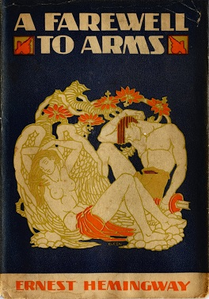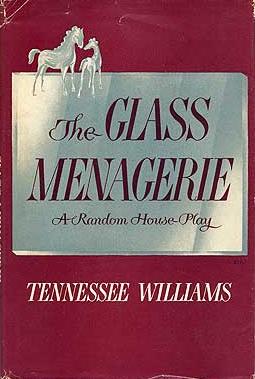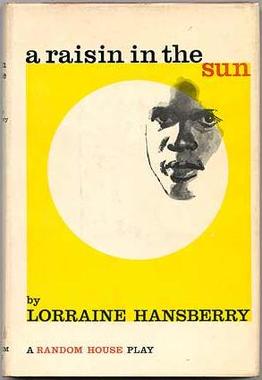Aaron Copland created an All-American sound for the orchestral hall.

What Is The American Aesthetic?
In our last post, we met Carl Maria von Weber, who is often credited with being the first Romantic composer and one of the first nationalist compsoers of the 19th century. In th epost before that we met the particularly French works of Erik Satie. While I am typing this, it is the week of July 4 and our focus is turned to all things America. But, what is the American aesthetic? I asked you to picture a sound, a site, a way of speaking, a way of seeing the world that is uniquely and specifically American. If I asked you to in your mind, imagine an artform that is the archetypically American. What would you envision? Would it be a city skyline? Towers of glass and steel reaching towards the sky, cathedrals of commerce? Would it be jazz? Broadway? Would it be superhero movies? Comics? Would it be a solitary cowboy on a horse galloping towards a sunset?
All of these images are apt, indeed, as the America is a wide nation with as many regional styles as their are terrains. While European nationalists were finding their national voice in the 19th century, American artists were finding theirs in the first half of the 20th. Two World Wars, the Great Depression, the proliferation of the new art of film, and the birth first American art form Jazz (we've met some Jazz "ellas" and "fellas" in this blog) all contributed their tenor to this voice. According to the US Census, the American population nearly double from 92,228,531 in 1900 to 179,323,175 in 1960. Some of pivotable creative works include: Fiction by Ernest Hemingway (July 21, 1899 to July 2, 1961) A Farewell to Arms and F. Scott Fitzgerald (Sept. 24, 1896 to Dec. 21, 1940) The Great Gatsby. Paintings by Edward Hopper (July 22, 1882 to May 15, 1967) Nighthawks and Grant Wood (Feb. 13, 1891 to Feb. 12, 1942) American Gothic. Plays by Lorraine Hansberry (May 19, 1930 to Jan. 12, 1965) A Raisin in the Sun and Tennessee Williams (March 26, 1911 to Feb.25, 1983) The Glass Menagerie. This is only a very small selection of the many American creative masterworks and many American aesthetics that sprouted during that tumultuous time of explosive growth. For American concert music one of the pioneers of the aesthetic was composer Aaron Copland (Nov. 14, 1900 – Dec. 2, 1990).
Aaron Copland: Early Life and Works (1900 to 1920s)
Aaron Copland lived nearly the 20th century born 1900 and dying in 1990. He was born to Russian Jewish immigrants in Brooklyn, New York and was educated in New York's public schools. He began playing piano as a child with his older sister Laurine serving as his first teacher. Laurine was a student at the Metropolitan Opera School and a frequent attender of the opera and actively encouraged Aaron's musical interest. Copland began creating his first songs at only eight and a half years of age and committing them to paper at age 11.
I went to Paris because that's where the new things was happening.
Unlike many other composers, Copland forwent a conventional college education and chose instead to travel to Paris, France to study under lauded music educator, conductor, and composer Nadia Boulanger (Sept, 16, 1887 to Oct. 22, 1979) in her studio. It was under her instruction that he first began to search for an "American" style of concert music. When speaking of this time in his life Copland said,
“I went to Paris because that's where the new things was happening. You see, the old things was Brahms and Raeger. They were German composers. And Wagner, of course. But the new music was being written by Debussy and Ravel And that's where I wanted to be, where the new stuff was coming from... And I was very anxious in some way to express the kind of life I knew in Brooklyn, or American life, you might say, in our serious music... I suppose the distance created a clearer picture of what I had left. You know, you were three thousand miles away, and somehow America seemed more together with that far-off view...”
So inspired by the American way of life and influenced by American writers such as Theodore Dreiser (Aug. 27, 1871 to Dec. 28, 1945), Walt Whitman (May 31, 1819 to March 26, se1892) and Ralph Waldo Emerson (May 25, 1803 to April 27, 1882), Copland began to seek out an American style of music for the concert hall.
I really lived through the sense of getting rid of the past and developing something new of our own time.
Two Pieces for violin and piano: "Nocturne"
Copland was aware of popular music genres such as Ragtime, Jazz, and Blues were uniquely American and very much of the time. So he began including idioms from these genres in his compositions. He said in an interview, "I really lived through the sense of getting rid of the past and developing something new of our own time.” After studying with Boulanger for three years from 1921 to 1924, he returned to the United States. During this time, he began composing works that were directly influenced by American music. His Two Pieces for violin and piano, composed in 1926 featured the languid and blusey "Nocturne" and the vibrant and jazzy "Ukulele Serenade". "Nocturne" is deeply emotional piece that feels like an humid summer evening in the American south, while "Ukulele Serenade" features chord figurations in both the accompaniment and on the violin meant to simulate the textures of the Hawaiian instrument.
Two Pieces for violin and piano: "Ukulele Serenade"
Piano Concerto for piano and orchestra
Copland fully embraced the textures of Jazz in his 1926 work Piano Concerto for piano and orchestra. First performed in Boston on Jan. 28, 1927, the work was not well-received by the American concert hall audience. Upon reading letters from listeners, Copland wrote to composer, Nicolas Slonimsky (April 27, 1894 to Dec. 25, 1995) “How flattering it was to read that the ‘Listener’ can understand Strauss, Debussy, Stravinsky – but not poor me. How instructive to learn that there is ‘no rhythm in this so-called concerto.’"
However, the 1927 listeners were wrong; the piece is teeming with rhythm, intricate, pulsing syncopations of Ragtime with the soulful and laidback, occasionally lazy, rhythms of Jazz. By the 1960s, the concerto had become a part of the American musical oeuvre. On an episode entitled "Jazz in the Concert Hall" (Airdate: March, 11 1964) of his television program, Young People's Concerts, composer and conductor Leonard Bernstein (Aug. 18, 1918 to Oct. 14, 1990) introduced the work by explaining, "It's jazz of the twenties, full of Charleston rhythms, boop-poop-a-doops, and a certain Gershwin-like sentimentality. And the wonderful thing is that, old as it is, it still sounds as fresh and charming and full of zip as it did in 1927."
Young People's Concerts "Jazz in the Concert Hall"
Copland Delves Into The Music of the Common Man

In 1932, Copland was visiting Mexico City and being hosted by his friend the composer, conductor, teacher and writer Carlos Chávez (June 13, 1899 to Aug. 2, 1978). Chávez took Copland to a music venue and dance hall called “c,” where Mexicans across all social classes could enjoy a night out. It had a sign that read "Three halls: one for people dressed in your way, one for people dressed in overalls but shod, and one for the barefoot." In the third room there was a sign that said,"Please don't throw lighted cigarette butts on the floor so the ladies don't burn their feet." Copland reminisced about the experience saying, "…In some inexplicable way, while milling about in those crowded halls, one really felt a live contact with the Mexican people — the atomic sense one sometimes gets in far-off places, of suddenly knowing the essence of a people — their humanity, their separate shyness, their dignity and unique charm."
Copland so enjoyed his time at the venue that he purchased a stack of popular Mexican folk music to use an inspiration for a new concert work. He wrote that his "purpose was not merely to quote literally, but to heighten without in any way falsifying the natural simplicity of Mexican tunes.” What resulted was a symphonic composition in one movement. The work premiered on Aug. 27, 1936 with the Orquesta Sinfonica de Mexico at the Palacio de Bellas Artes in Mexico City performing under the direction of Chávez.
Chávez was optimistic about the reception of the work but had his reservations. He wrote, "I still felt nervous about what the Mexicans might think of a gringo meddling with their native melodies." However, any reservations were quickly dismissed as the orchestra players enthusiastically applauded the work from the earliest rehearsals. Mexico's folk music is significantly more rhythmically complex and potent than traditional Western art music, hinting at its pre-Hispanic indigenous roots. Musically, the movement showcases Copland the emergence populist style and he would soon take a similar approach to the music from north of the border as well, laying out the foundation level for a wholly American musical aesthetic. Check out Aaron Copland: Distinctively American Part 2 to learn what elements come together to create distinctly American concert music.
El Salón México for orchestra (1936) Full Score
For Further Information
Bernstein, Leonard. Young People's Concerts. "Jazz in the Concert Hall." Airdate: March 11, 1964.
El Salón México (1920) (Spanish language).
Moyers, Bill. Interview with Aaron Copland.
Wright, Kai. (host). Music, McCarthy, and the Sound of Americana.
Wright, Kai (host). Notes From America Podcast. Why It’s So Hard to Sound “American” https://podcasts.apple.com/us/podcast/notes-from-america-with-kai-wright/id1155194811?i=1000619377488
Yale University. Aaron Copland: A profile from Yale’s Oral History of American Music Project Podcast.
Janae J. Almen is a professional music instructor, composer, sound artist, and writer. She has a BA in Music/Education from Judson University and a MM in Computer Music/Composition from the Peabody Institute of the Johns Hopkins University. She is the founder of Perennial Music and Arts and is passionate about sharing her love of music and arts.
















Commentaires